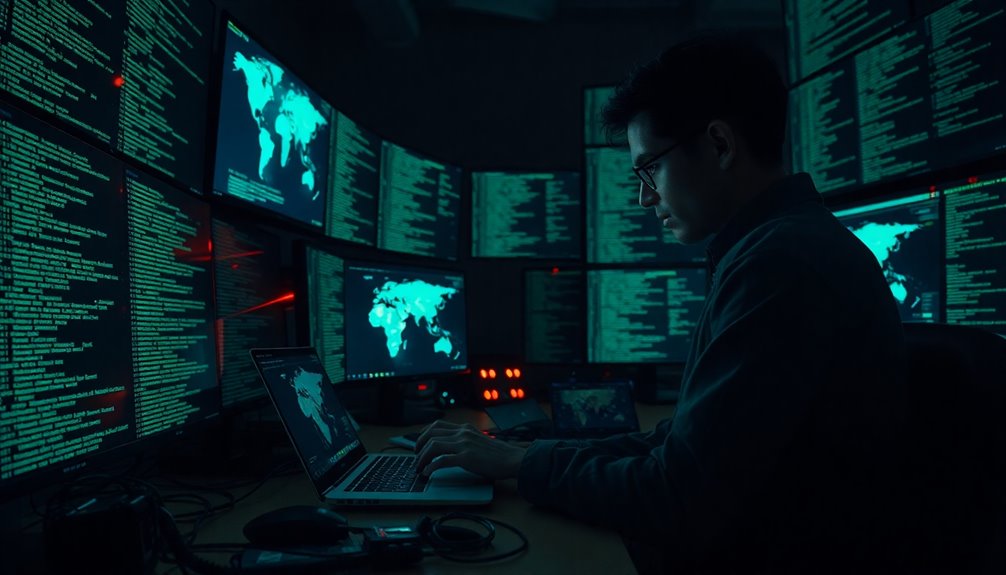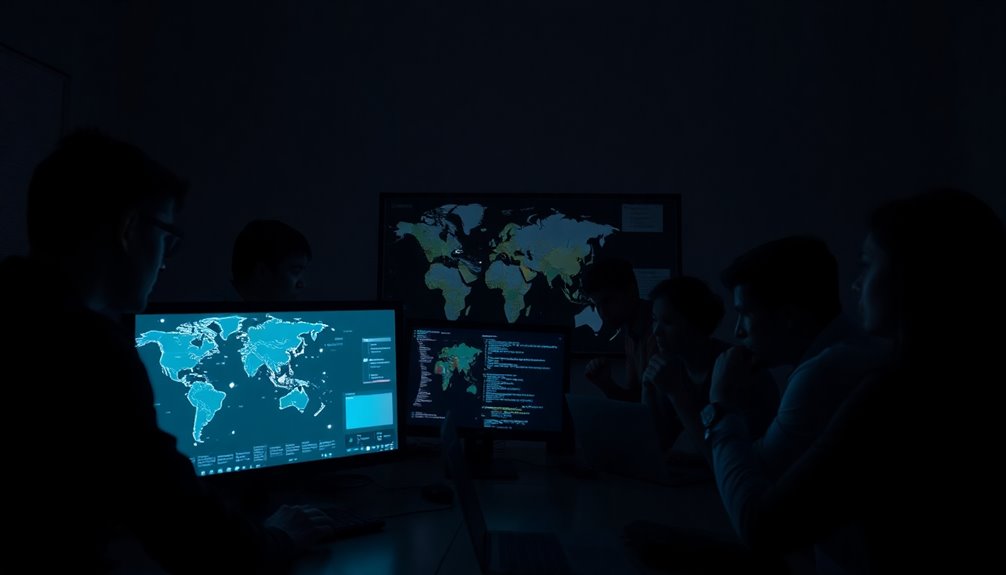
As cyber threats continue to evolve, the Sidewinder espionage group has emerged as a significant player, targeting critical sectors like maritime, logistics, and nuclear energy. You mightn't be aware, but this group has been focusing its efforts primarily in Asia and Africa, expanding its reach into several new countries. Their attack strategies are sophisticated and often employ spear-phishing emails loaded with malicious attachments. You could easily fall victim if you're not vigilant.
The Sidewinder group is known for its adaptability and swift updates to its malware, often making changes within hours to avoid detection. They primarily use a post-exploitation toolkit called StealerBot, which offers capabilities like screenshot capture, keystroke logging, and password extraction. This means that if an attack is successful, the potential for data theft is significant.
Their phishing themes vary; they often masquerade as communications related to maritime infrastructure or nuclear energy documents, which can easily trick unsuspecting targets.
One of the vulnerabilities they exploit is CVE-2017-11882, an old Microsoft Office flaw. You might think that using outdated vulnerabilities is a sign of weakness, but Sidewinder shows that even older exploits can be effective when combined with modern tactics. They utilize techniques like remote template injection to deliver their malware, making it essential for organizations to keep their systems patched and updated.
Exploiting CVE-2017-11882, Sidewinder proves that old vulnerabilities can be lethal when paired with modern tactics.
In Asia, countries like Bangladesh, Cambodia, and Vietnam are particularly vulnerable, while in Africa, Egypt and the UAE have been key targets. Notably, their focus on the maritime, logistics, and nuclear energy sectors underscores the critical nature of their attack campaigns. Their activities aren't limited to these regions, though; they've also been observed targeting diplomatic organizations globally. This broad reach raises serious concerns about the security of critical infrastructure, especially in sectors like nuclear energy and telecommunications.
The implications of these attacks can't be understated. You need to be aware that the sophistication of Sidewinder's methods poses a real threat to data integrity and national security. Organizations must be proactive in their cybersecurity measures. Implementing regular patch management, advanced threat detection systems, and employee training can help mitigate risks.
In a world increasingly reliant on digital infrastructure, the Sidewinder espionage group serves as a stark reminder of the growing cyber threat landscape. Staying informed and vigilant can make a significant difference in defending against such advanced threats. Remember, cybersecurity isn't just about technology; it's about people being aware and prepared to act.









